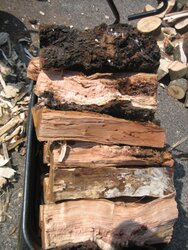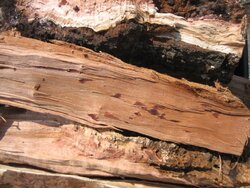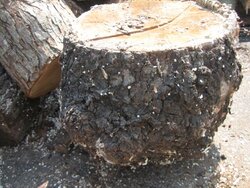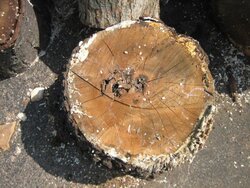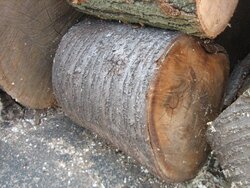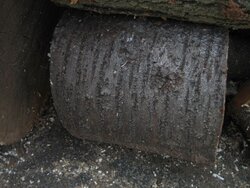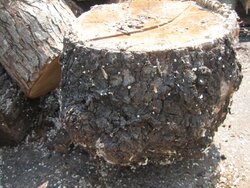Tree ID, Please
- Thread starter CMAG
- Start date
-
Active since 1995, Hearth.com is THE place on the internet for free information and advice about wood stoves, pellet stoves and other energy saving equipment.
We strive to provide opinions, articles, discussions and history related to Hearth Products and in a more general sense, energy issues.
We promote the EFFICIENT, RESPONSIBLE, CLEAN and SAFE use of all fuels, whether renewable or fossil.
You are using an out of date browser. It may not display this or other websites correctly.
You should upgrade or use an alternative browser.
You should upgrade or use an alternative browser.
- Status
- Not open for further replies.
PA. Woodsman
Minister of Fire
S
ScotO
Guest
I'm saying cherry too, as far as the splits and a couple of the rounds. But the round in the background of the third picture looks like white oak to me......
Nixon
Minister of Fire
Backwoods Savage
Minister of Fire
Paulywalnut
Minister of Fire
PA. Woodsman
Minister of Fire
I'm saying cherry too, as far as the splits and a couple of the rounds. But the round in the background of the third picture looks like white oak to me......
You're on your game today-it didn't register with me!


JOHN BOY
Minister of Fire
The bark varies that much?What yah got there mate is a bloody cherry tree
You must be talking about my OP I will start a new thread for this one.What yah got there mate is a bloody cherry tree
So, cherry, black cherry, bloody cherry
 How many cherry trees are there
How many cherry trees are thereWoody Stover
Minister of Fire
If you were to re-cut a split, you'd be able to smell that sweet Cherry smell.The bark varies that much?
You must be talking about my OP I will start a new thread for this one.
So, cherry, black cherry, bloody cherryHow many cherry trees are there
There are some different varieties that people plant in their yards, but the most widespread Cherries that grow wild in the woods here are the Black Cherry. They have that rougher bark and will bear a small-sized fruit (edible by animals and humans.)
PA. Woodsman
Minister of Fire
Yea my rounds from last year are mixed (live and learn, sorting my wood now)
Anyways another ID View attachment 111368 View attachment 111369 the right picture is closer to the true color, the end grain is looks close to the above pic of the cherry.
That there I believe is Pin Cherry.
Woody Stover
Minister of Fire
Thanks again for the schooling 
I guess the pinkish red wood and smell are what to look for?
I found the outer bark on oak (red?) and maple can look the same (some times)

I guess the pinkish red wood and smell are what to look for?
I found the outer bark on oak (red?) and maple can look the same (some times)

Woody Stover
Minister of Fire
S
ScotO
Guest
Yup! Pin cherry!That there I believe is Pin Cherry.
Leaves would be cool, but they go to the chipper as I get log's droppedIf you can ID by leaves, then look at the bark, end grain, and split side, you'll soon get to where you can ID wood correctly more often than not. Bark can vary quite a bit in a given specie, so it helps if you know the leaves and how the split wood looks.
I have found the layer under the bark tells allot and the look of the wood under that

I am trying to work on one stack of wood at a time so trying not to split to ID
Woody Stover
Minister of Fire
Yeah, that one on the left that Scotty saw. The rays appear as lines radiating out from the center of the round on the end grain. Many trees have 'em but on Oak they are usually (but not always) easy to see.I had to google thatsounds like the rings in the end grain?
Woody you said the third pic I assume your talking about what Scotty noted as white oak in the background of this one?
Yes, the color etc. of the inner bark can help with ID, too. I'm not too good at that yet, though.
- Status
- Not open for further replies.
Similar threads
- Replies
- 7
- Views
- 512


